Where to go Wild Swimming in France
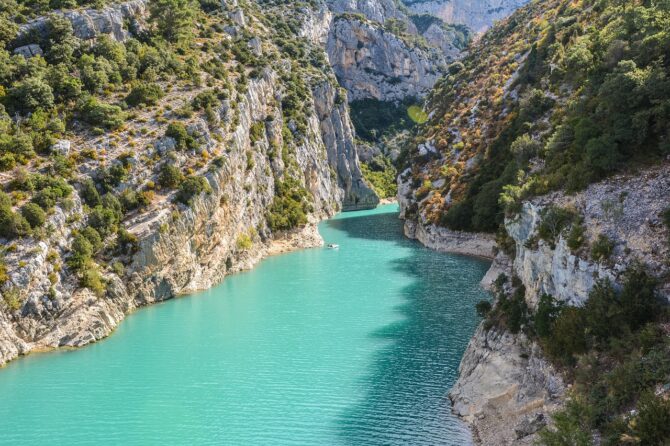

Ruth Wood dips into Daniel Start’s book about France’s wild swimming spots, from languorous rivers and bubbling falls to turquoise lakes and hot springs…
A house by the sea in France can make your eyes water-not just due to the salt but the premium attached to coastal property. Properties by rivers and lakes tend to attract more modest pricetags and yet, says Daniel Start, the country’s fresh inland waters are a paradise for wild swimmers.
“France is a wonderful country for swimming,” says Daniel, who has just launched the second edition of his travel guide Wild Swimming France. “It has a quarter of the population density of England and such good water quality. The north is rich in pastoral rivers, weirs and beaches while in the south are the gorges and waterfalls of the Massif Central I have been exploring France since I was a boy and I really wanted to document its most beautiful aquatic wonders.”
Through 15 years of research and 20 trips to France, Daniel (who lives, appropriately, near the city of Bath) has pinpointed and photographed thousands of great wild swimming spots in the Hexagone. Here is just a taster to ‘wet’ your appetite.
Wild Swimming in Normandy
Hop off the ferry at Caen and within 30 minutes you can dive into the delights of Calvados with a dip in the River Orne. Meandering through an area of meadows and limestone cliffs known as the Suisse Normande, its silty, warm and clean waters are bordered by cycle paths, enabling you to discover swimming spots from the saddle.
Daniel highlights the village of Clécy, a fun-filled stretch of riverside with weir, restaurants, rope swings, pedalos and canoe hire.
Over in the department of Eure, canoeing is a good way to explore the tranquil pools and grassy banks of the Risle river south of Pont-Audemer and the Eure river, near Evreux. Try the rapids at Condé-sur-Risle or one of the many Eure pools such as the gravel lakes at Maintenon. There are also some beautiful lakes in the Perche regional park, says Daniel, who singles out the jade-green Étang de Mousuette, a secluded lake in deep forest with warm water and sandy banks.
Loire Valley Wild Swimming
Swimming is not allowed in the mighty Loire, due to its unpredictable channels and flows, although there are plenty of safe paddling spots. Likewise, it is prohibited on the Sarthe due to boat traffic.
Thankfully, the rivers have many peaceful tributaries. One such is the Louet, a sandy side channel of the Loire boasting some of the region’s finest river beaches, according to Daniel, although water levels can drop in summer. He suggests you try Port Gaurion, south of Angers.
He also recommends a swim in the Loir, where it drifts past the ruined medieval château of Lavardin and the troglodyte dwellings of Trôo. For a fairytale backdrop, how about a dip in the Cher just upstream from Château de Chenonceau? You can also swim off the beach at Sabot campsite, just round the corner from the château of Azay-le-Rideau.
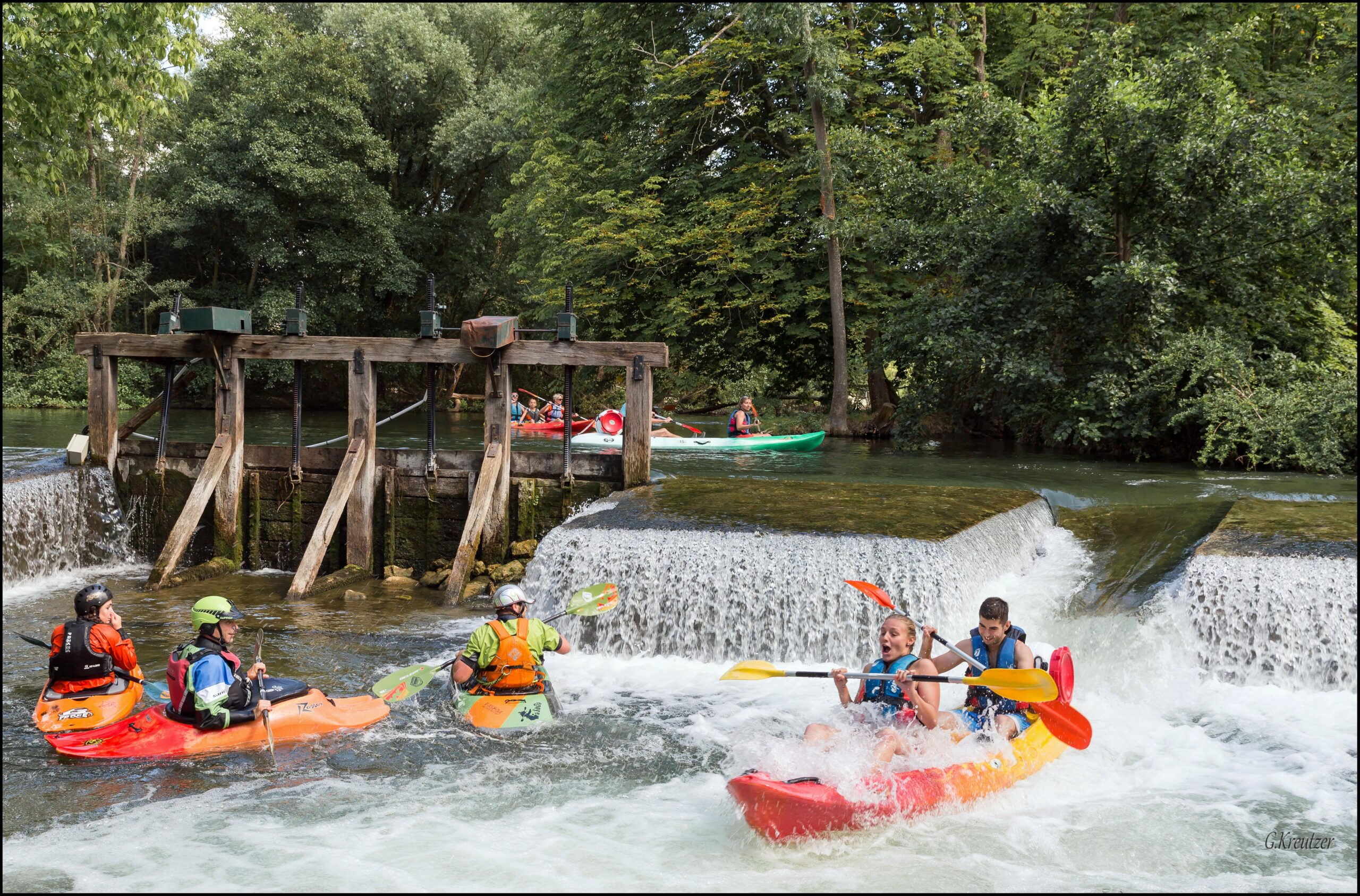
Wild Swimming in Burgundy
The nearest serious hills to Paris are in the Morvan regional park, which hosts plentiful swimming lakes and reservoirs. Try the shores of Lac de Pannecière-Chaumard near Bonin or the unspoilt waters of Chaumeçon about 1.5km north of Vaussegrois.
Among the rivers rising on the Morvan plateau is the Cure, which flows north and pours into the Yonne south of Auxerre. Children will love the plunge pool below the Saut de Gouloux waterfall, says Daniel, and splashing in the river beside the twin stone bridges of Pierre-Perthuis. Downstream, you can take a dip in the “whisky-brown waters” beside the Grottes d’Arcy-sur-Cure, a remarkable series of caves with prehistoric paintings.
On the Chalaux, a tributary of the Cure, adrenaline junkies can try hydrospeed, a form of whitewater swimming with floating board and flippers.
For a more serene experience, bathe in the aptly named Serein as it meanders through picture-perfect Noyers and Chablis, In both cases a good spot is by the campsites on the south side of town.
Where can you go wild swimming in Limousin?
Those who seek an affordable home in France may already know the Creuse, Gartempe, Vienne, Maulde and Dordogne rivers that flow through this rural region. Daniel points to two dozen great activities on the Creuse including jumping from the tree ladder on the islands at Néons-sur-Creuse, enjoying the island beaches at Sauzelles and bathing in the confluence pool at Fresselines where painter Claude Monet used to swim.
Lac de Vassivière in Creuse is the region’s largest leisure lake, with Broussas being Daniel’s preferred managed beach. But it’s the wilder shores of nearby Lac de la Vaud Gelade (try Pelletanges) and nearby Taurion gorges that are a real paradise for swimmers, he assures us-likewise, the secluded coves of Lac-de-St- Pardoux in Haute-Vienne.
In Corrèze, Daniel recommends the woodland pools of the River Maronne at Tours de Merle, where you’ll also find “the most romantic ruin in France”, he says. He’s a fan of the Cascades de Murel too, a waterfall trail on the Valeine, a stream north of Argentat-sur-Dordogne.
Where to wild swim in Poitou-Charentes
Head east out of the Vienne capital Poitiers and you find a host of wild swimming spots in the Vienne, Gartempe and Anglin valleys. Daniel highlights the Plus Beau Village of Angles-sur-l’Anglin, where bathers swim beneath a romantic ruined château, and L’Isle-Jourdain on the Vienne where you can swim under the arches of a viaduct.
Moving south we reach the teal waters of one of France’s best-loved waterways: the Charente, says Daniel. The cluster of bathing spots between Chatain and Angoulême includes the river pools by the prehistoric Chaffaud caves, near Civray, and the Aire de Rejallant at Ruffec, where you can enjoy good food, great swimming and canoe hire.
The mid-Charente, with its “mesmerising aquamarine hue” is finest around Aunac, where the woodland campsite has a series of excellent platforms for jumping and rope-swinging, says Daniel. Downstream, Lichères has a fun wooden hand-drawn barque across the river, while Le Portal at Vars has a supervised sandy beach, café, islands and rope swings.
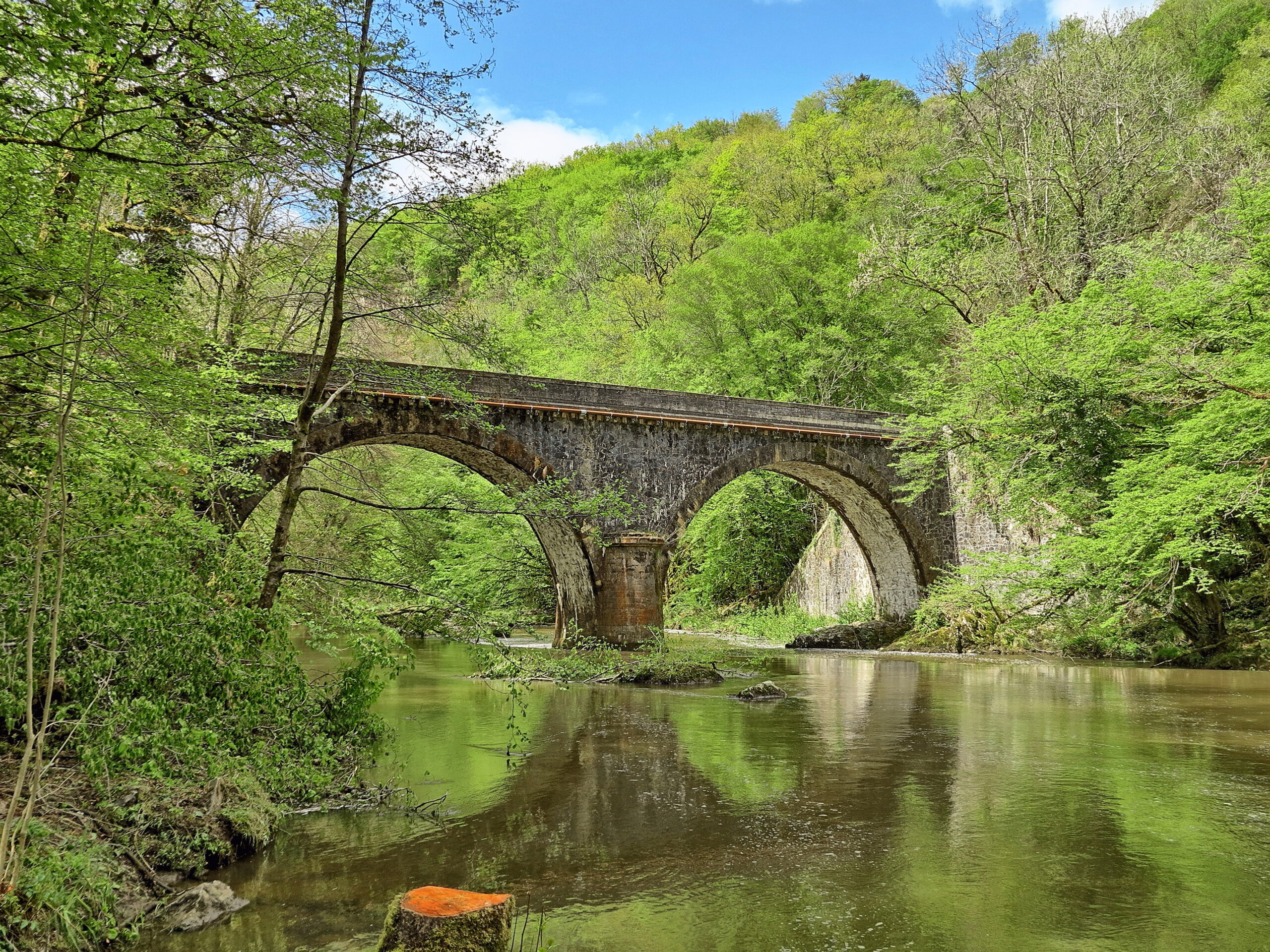
Auvézère river – Wikimedia Commons
Wild swimming spots in Dordogne
The Charente village of Aubeterre-sur-Dronne is famously beautiful, but its river beach gets crowded in summer. What do the locals do? Hop over the Dronne river into Dordogne where the laidback village of Chenaud has a wide section of river with a weir, brilliant tree swing and château views, says Daniel. So now you know!
Likewise, you can swim from the town beach in charming Brantôme – Venice of Périgord -but there are quieter spots nearby, such as Puy Joubert or Valeuil. Other treasures of the Périgord Vert include the managed lake beaches at St-Estèphe and Nantheuil, the former of which has a café.
Further south in the Périgord Blanc, the Auvézère river has charming beaches above the weirs of Cubjac and Cubas, and wild waterfalls at St-Mesmin and Savignac-Lédrier. The star attraction of the Périgord Noir is, of course, the 10km stretch of the River Dordogne between Domme and Beynac as well as the River Vézère with its prehistoric sites. But Daniel suggests escaping the crowds and plunging instead into the “impossibly clear jade waters” at the Pont de Couzoland Daglan on the Céou tributary.
Wild swimming in Lot and Aveyron
A place of limestone cliffs, pretty villages and magnificent caves with iridescent lakes, Lot is spliced to the south by its eponymous river and to the north by the mighty River Dordogne. But it’s on the narrower, lesser-known Célé that you’ll find some of the most idyllic swimming spots. says Daniel, especially between the municipal campsite at Brengues and the dramatic cliff-hewn village of Cabrerets. Try the little beach just downstream of Sauliac, with its snack bar and tree jump.
Over in Aveyron, there’s good swimming below the cobbled bridge of Belcastel and the St-Blaise bridge at Najac, says Daniel, both Plus Beaux Villages on the Aveyron river.
Finally, don’t miss the Aveyron gorges, confusingly in Tarn-et-Garonne. A great base is the historic town of St-Antonin- Noble-Val, with a family-friendly beach upstream at Cazals
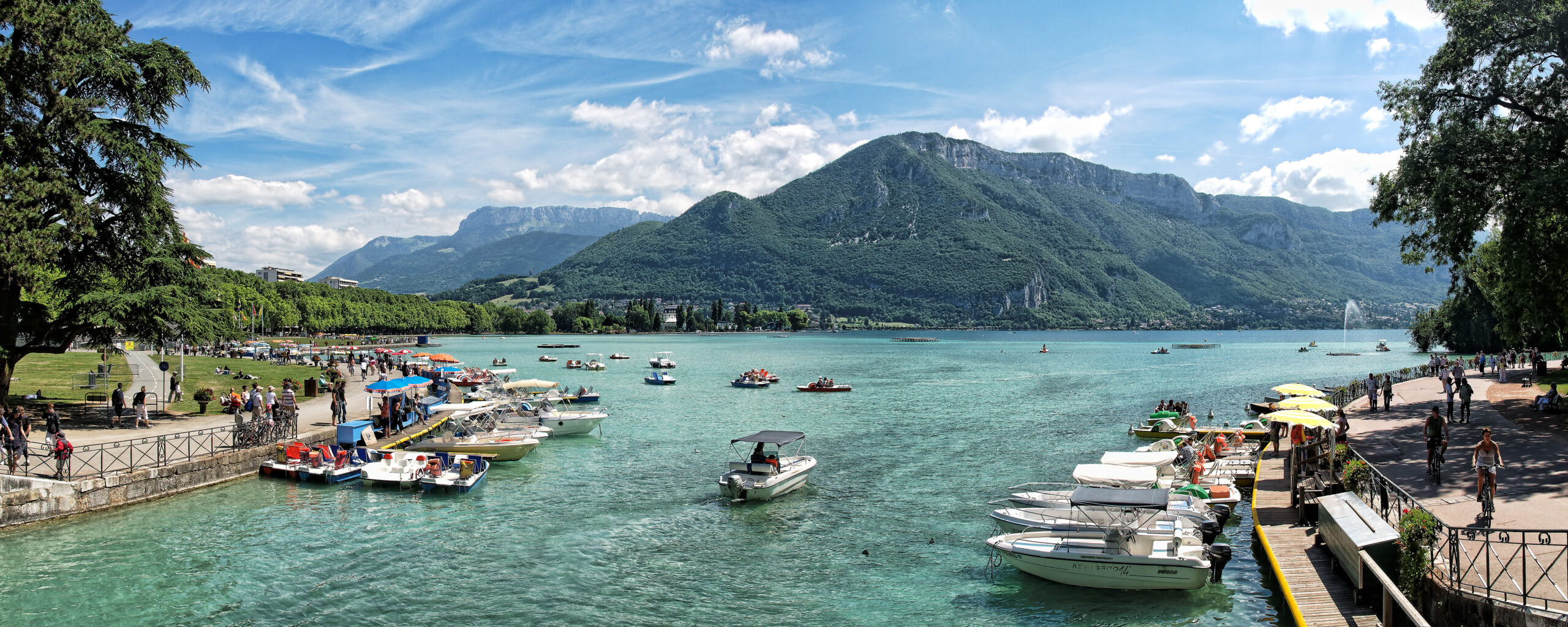
Can you swim in the Pyrénées and the French Alps?
Lac d’Annecy in Haute-Savoie is perhaps France’s most famous swimming lake. Of its managed beaches, Daniel favours Plage de Doussard on the southern tip for its knockout mountain views.
He also loves the eastern foothills of the Ecrins, south of Briançon, where there are several mountain streams and glacial lakes to explore along. the River Durance, including the chutes and pools of the Couleau gorge and the hot springs of Plan de Phazy.
In the Pyrénées, Daniel praises the fine pebble strands of the Oloron that flows through the ancient province of Béarn. Put in some lengths by the medieval bridge at Sauveterre-de-Béarn or relax on the pebbly Plage de Laàs at Montfort below the château where Napoleon slept the day after the Battle of Waterloo.
Neighbouring Ariège is rich in upland lakes and waterfalls. Daniel recommends relaxing in tranquil Lac de Mondély or making a splash in the jade-green pool beneath the Cascades de l’Artigue.
Where to wild swim in Roussillon and Corbieres
The Occitan Mediterranean beaches but also for its hot springs, says Daniel. The hippy atmosphere at the hot pools by Prats-Balaguer, in Pyrénées-Orientales, is not for everyone. But just downstream at Canaveilles, there’s a choice of sulphurous hot springs all along the riverbank and you can cool off in the River Tét afterwards. Indeed, the north- facing Têt and Tech valleys are full of world-class canyons, falls and smooth rocks that offer cold refreshment from the summer heat.
In Aude, you can get a natural hot shower at Rennes- les-Bains by following the river 300m downstream from the swimming pool to the springs.
Other Aude treats include the waterfalls and mauve-hued pools of the Gorges du Terminet on the River Orbieu, the Verdouble river by the Moulin de Ribaute, near Duilhac-sous-Peyrepertuse, and the Gorges de Galamus on the Agly with its “aquamarine pools of breathtaking beauty”.
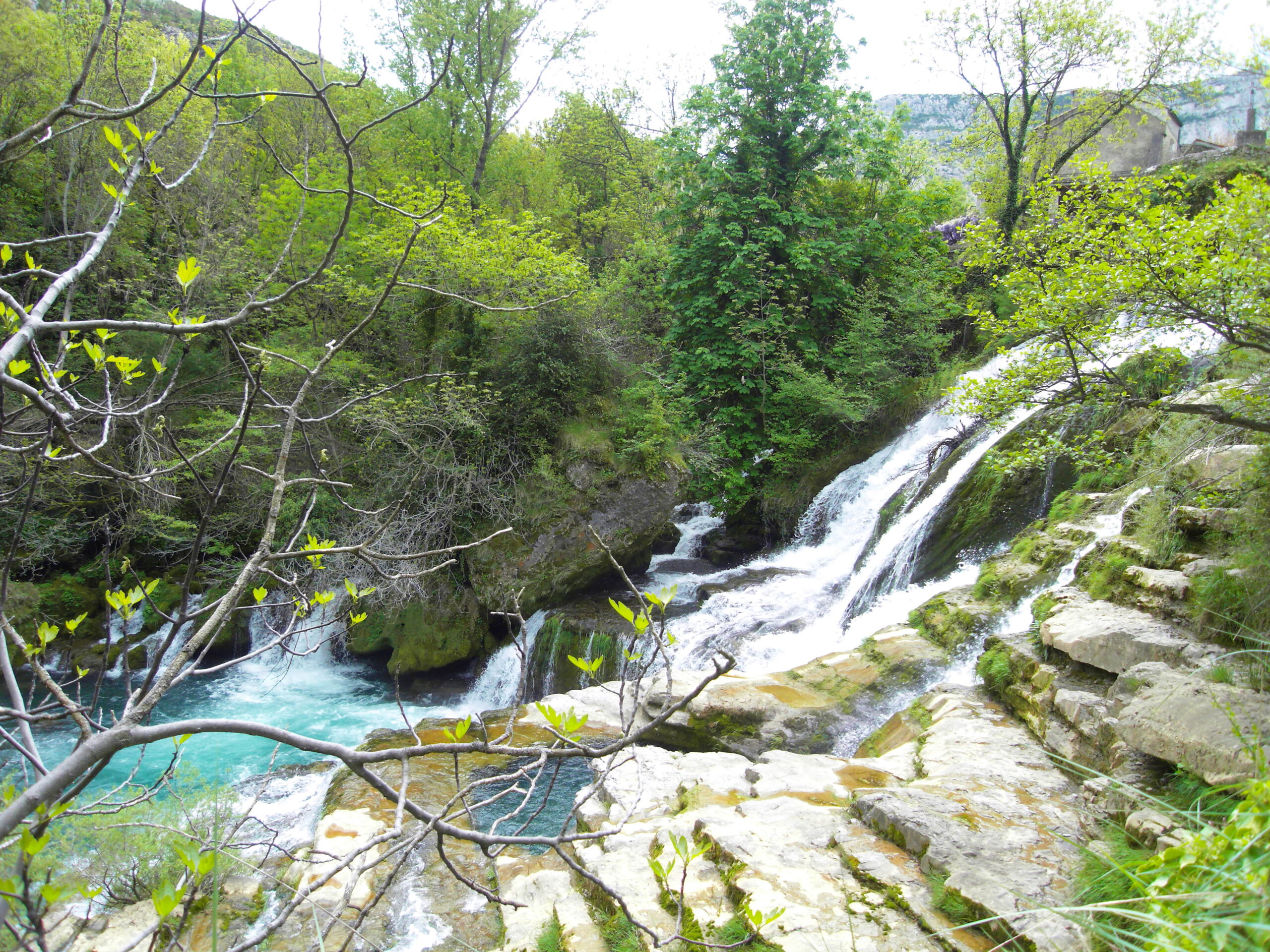
SAMSUNG DIGITAL CAMERA
Wild swimming in Languedoc and Ardeche
The Orb in Hérault is one of the finest swimming rivers in France, says Daniel. A string of perfect beaches and deep pools stretches from just north of Béziers to the confluence with the River Jaur. Above here you’ll find the Gorges d’Héric, with its large boulders and clear, cool plunge pool.
One awe-inspiring sight to the east is the Cirque de Navacelles, where the meandering Vis river has cut an immense cauldron in the plateau. Bubbling up from an underground cave is a secluded waterfall from which fun-seekers have been leaping for generations.
Further east, the Pont du Gard is an iconic (and busy) swimming spot where the deep indigo waters of the River Gardon drift beneath a UNESCO-listed Roman aquaduct. Less well known are the bubbling pools and jumping ledges of the Ceze, particularly at the Cascade de Sautadet just outside La- Roque-sur-Cèze.
To truly get away from it all, immerse yourself in the waters of the Tarn in Lozère at St-Chély-du-Tarn, Castelbouc or Pont-de-Montvert. In the Ardèche, Daniel’s tips include snorkelling in the aquatic limestone grottoes at La Padelle on the River Chassezac and enjoying a dawn swim under the Pont d’Arc before the day’s canoeists arrive en masse.
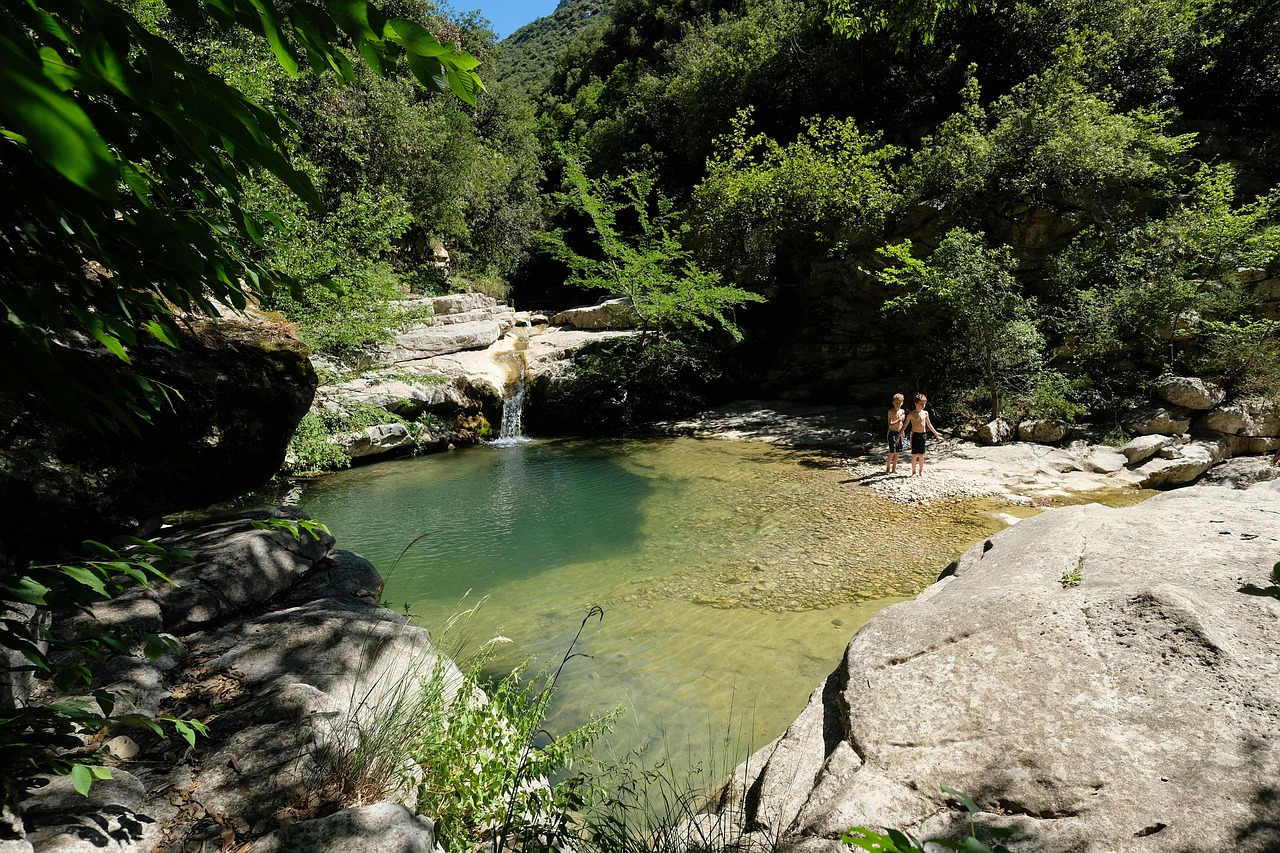
Wild swimming in Provence and the Cote d’Azur
Far from the crowded Riviera is the turquoise gem in Provence’s crown-the Verdon gorge. A pedalo from Pont du Galetas is a good way to see the limestone canyon and then swim under its waterfall, says Daniel. The Verdon’s lakes Ste- Croix and Quinson offer ample swimming opportunities (try Bauduen and Pont de Quinson) as do the Jabron and Artuby rivers, which Daniel describes as mini Verdons.
South of the Verdon is the unassuming village of Sillans- la-Cascade where the Bresque river plunges into what Daniel calls a “palm-lined oasis of opal water that makes you think you’ve been transported to Costa Rica”. Swimming is prohibited due to the risk of rock falls, but you’ll find more milky-blue pools in the woods downstream and another big waterfall further along the path, he assures us.
Many of the smaller rivers of arid Provence dry up in summer, but not the Toulourenc in northern Vaucluse, says Daniel. Families love to wade in its white limestone canyons east of Vaison-la-Romaine.
Last but not least, don’t miss the spectacular Clue d’Aiglun and the other ‘clues’ (canyons) of Alpes-Maritimes, in the mountains just above Nice. “Here, the Estéron has sliced a white slot canyon with great marble pools through the centre of the mountains,” says Daniel. “The clarity of the water and the smoothness of the plunge pools is a dream.”
Interested in wild swimming in France?
Daniel Start, author of the popular book Wild Swimming in France, joined our friends at France Today Live and dove into his favourite spots to cool off this summer, including beautiful rivers, lakes, waterfalls, hot springs, and natural pools all across the country. Daniel also shared his top tips to enjoy and preserve these natural gems and make your next trip a truly unforgettable experience.
Share to: Facebook Twitter LinkedIn Email
More in Nouvelle Aquitaine, Occitanie, Pays-de-la-Loire, Provence-Alpes-Cote d'Azur


